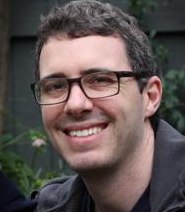
A recent article by Caleb Garling from the San Francisco Chronicle about Radiopaedia.org raised a few interesting questions, and it made me sit back and think about what exactly Radiopaedia.org is about, along with some of the areas we we will be focusing on in the coming years.
Radiopaedia.org started with a dual purpose. The first is to create a platform to enable radiologists from all over the world to share their cases and their collective expertise. The second is to create a resource available to all health professionals independent of their personal, institutional or regional wealth.
Almost a decade into this project we have come a very long way in achieving a degree of success on both fronts.
We have created a bespoke web app which can display radiology cases on any modern browser in a way that is intuitive to most radiologists, and have amassed almost 15,000 cases covering an enormous variety of conditions. Thousands of contributors have also collaborated in writing over 6,500 articles and slowly we are getting to the point that most conditions have at least some content, and in very many instances the articles are comprehensive with many illustrative cases. We have done this all without charging a single dollar to any user to access our site or any of our content (NB the cases featured in our various iOS apps are available for free on the site).
Currently (Feb 2014) we are visited by well over 1 million unique individuals each month, who read over 4.5 million pages each month.
Caleb Garling in his article asked: “But Radiopaedia does invite more questions. The [cases] are crowdsourced — are the diagnoses accurate? Do people have to worry about their X-rays being posted online without their knowledge? And perhaps most importantly, is this actually useful for doctors?”
These are good questions.
I have tried as best I can to answer the middle question in a separate blog post (patient privacy and cases on Radiopaedia.org), but what about the other two questions?
Is radiopaedia.org useful?
As far as usefulness for our intended audience (radiologists and other health professionals) I can only go on anecdotal experience and the hundreds of feedback emails and comments we receive each year (recently we have started to publish these here - we love to hear from you, and if you want to let us know how you find Radiopaedia.org useful leave a comment or send us an email). I personally think we are useful, and over the years I have been approached by hundreds of residents/registrars, fellows and consultants, both in radiology or other specialties who have told me how much they rely on Radiopaedia.org for study and as a references. Not only that, but I find myself referring to the site frequently.
Accuracy and quality
That brings us to the big question, and the one what will be one of the main focuses of our attention over the coming years: accuracy / quality of new content as well as of the content we already have.
Being a collaborative resource, contributed to by thousands of individuals from a wide range of backgrounds and bringing to the project a wide range of knowledge, the cases contributed are unavoidably of variable quality, despite fairly explicit guidelines outlining what constitutes a good quality case.
Although all new cases undergo moderation by our section editors there is still variation in quality not just of the images themselves, but also in how solidly the diagnosis has been established. To give contributors the option of holding on to a case until they are able to ‘polish it’ prior to publishing it, we have recently released draft mode for cases and it has resulted in an improvement in the overall quality of cases. Additionally, we will soon also be allowing moderators to push a sub-standard or incomplete published case back to draft mode, at which time the contributing authors will be asked to improve the case. Perhaps even more importantly for future case uploads, we will be improving the edit mode for cases and adding incentives to fully document how a diagnosis has been established.
The other focus is in creating better search tools, which can float the better cases to the top of the results. The challenge is in how to mechanically identify these cases as with the number of cases we have a manual approach is impractical. We have been thinking hard about this and have a number of avenues to explore. As with everything we do, we will take an iterative approach, gradually improving each feature.
All of this is however not going to be enough without the support of our amazing community of dedicated volunteers. A huge advantage we have over traditional resources, an advantage which I think eventually will be shown to be decisive, is that any error can be corrected immediately. With good referencing we can create content that is of excellent quality, trustworthy and up to date. Most importantly we can continue to make all this content available to every single individual on the planet for free. By doing so we can help them become better doctors and thus help patients.
I look forward to seeing Radiopaedia.org grow into an even more comprehensive and mature resource and I hope that you will help us in our endeavor.

Dr Frank Gaillard is a neuroradiologist at the Royal Melbourne Hospital, Melbourne, Australia, and is the Founder and Editor of Radiopaedia.org.
NB: Opinions expressed are those of the author alone, and are not those of his employer, or of Radiopaedia.org.







 Unable to process the form. Check for errors and try again.
Unable to process the form. Check for errors and try again.